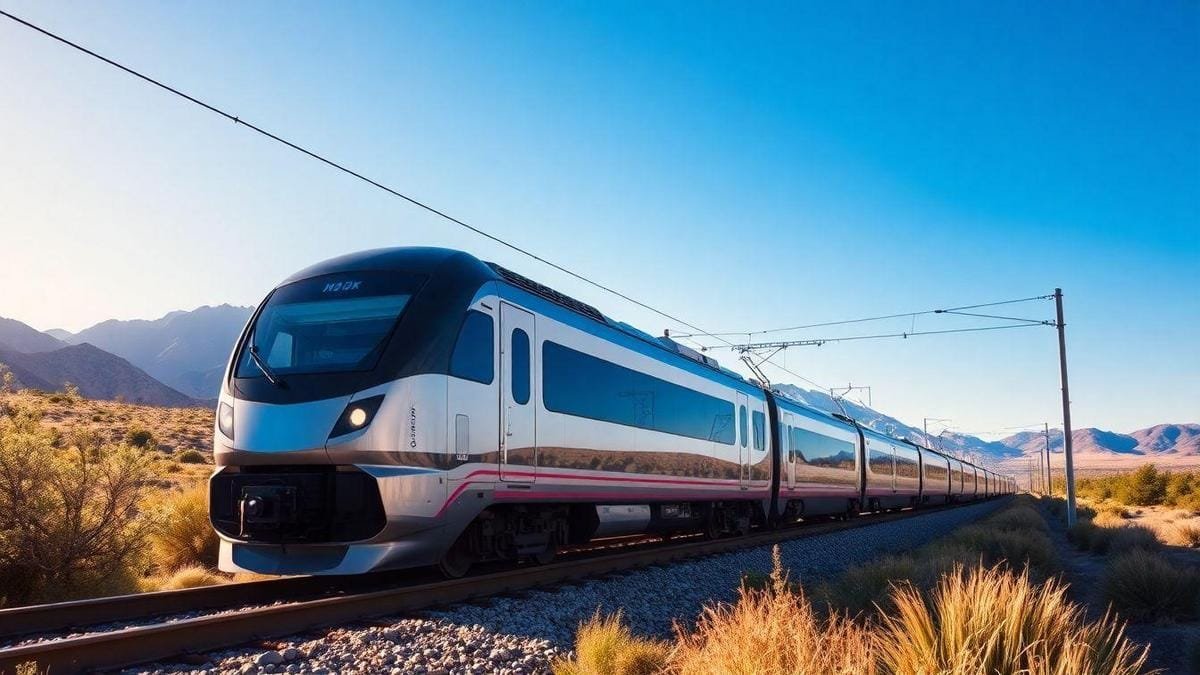Listen to this article
The Trump administration to cancel $4 billion in funding for the high-speed train of California brings new challenges. With criticism from the Secretary of Transportation, Sean Duffyand promises from the governor Gavin Newsom to challenge this action, you will learn about the important implications for the future of transportation in the state. California is looking for alternatives, including state funding and public-private partnerships, to move forward with the project and complete the first section by 2033.
- The Trump administration has cut $4 billion of the California train project.
- California will look for new ways to finance the project.
- The transport secretary criticized the project, calling it wasteful.
- Governor Newsom considers the decision illegal and will challenge it.
- California plans to finance the first section of the train by 2033.
The End of California's High-Speed Train Dream?
Introduction
Have you ever imagined traveling by high-speed train through California? A dream that seemed possible, but now faces major challenges. California's high-speed train project, which promised to revolutionize transportation in the state, is in trouble. The federal government, under the administration of Donald Trump, has withdrawn $4 billion in financing, leaving the future of the project uncertain.
What Happened?
A California High-Speed Rail Authority is looking for new ways to continue the project, but the difficulties are immense. The Transport Secretary, Sean Duffy, has spared no criticism of the project, saying that it's time to put this waste behind us. For you, this may sound like a big disappointment, especially if you believe in the potential of a more efficient transportation system.
Duffy also announced that the federal administration had canceled two important subsidies. The first, from $928 millionwas granted in 2010, while the second, of $3.1 billionThe bill was repealed in 2024. This is because the project is almost $7 billion below the budget required for its completion. To you, this may seem like a complicated situation, where the dream of high-speed transportation may be fading away.
California's response
The governor of California, Gavin NewsomHe did not remain silent in the face of this situation. He called the federal government's decision illegal and stated that the state is "considering all available options" to challenge this action. This shows a strong commitment on the part of the state government to fight for the project, even in the face of great adversity.
Duffy, on the other hand, defended the decision to revoke the subsidies, claiming that the project would not fulfill its obligations under the financing agreement. This raises the question: is the project really doomed to fail or is there still hope?
What's Next?
Despite the withdrawal of federal funding, California officials are determined to find ways to finance the completion of the first section of high-speed rail. They plan to connect Merced a Bakersfield by 2033, using a combination of state taxes and public-private partnerships. For you, this may be a sign that, even in the face of difficulties, there is a determination to move forward.
Governor Newsom asked the legislature to commit to providing $1 billion annually until 2045, using cap-and-trade sources. This shows that the state is willing to look for alternatives to ensure that the project doesn't die.
The Impact of the High-Speed Train
You may wonder: how important is this project? A high-speed train system could transform the way people move around California. Imagine traveling from Los Angeles to San Francisco in a matter of hours, instead of spending hours in traffic or on flights. The project isn't just about transportation; it's about mobility e connection between the cities.
In addition, the construction of the train could generate thousands of jobs and boost the local economy. This means that the project goes beyond a simple means of transportation; it represents an opportunity for growth and development for California. To better understand how construction can impact the economy, you can explore the relationship between infrastructure investments and economic growth in this article.
The Challenges Faced
However, the path is not easy. The project has already faced several challengesincluding funding issues, political opposition and environmental concerns. In a state as large and diverse as California, it's only natural that there should be different opinions about building a high-speed train.
Critics argue that the project is expensive and that the funds could be better used in other areas, such as education or health. This raises an important debate about priorities and how the government should allocate limited resources. For a more in-depth analysis of how non-residential spending impacts the economy, you can check out this study.
The Role of Public Opinion
Public opinion plays a crucial role in this debate. What do people really think about high-speed rail? In recent polls, many Californians expressed support for the project, believing that it would bring significant benefits to the state. However, others are skeptical and question whether the project will actually be completed.
The division of opinion reflects concerns about the cost and feasibility of the project. This may be an indication that communication between the government and the population needs to be improved, so that people better understand the benefits that a high-speed train system could bring.
The Vision for the Future
The future of high-speed rail in California is still uncertain. Despite the challenges, there is a light at the end of the tunnel. The state is exploring new forms of financing and seeking partnerships that could help make the project a reality.
The fight by Gavin Newsom and California officials to overturn the federal government's decision is a sign of determination. It can be a reminder that, even in the face of great obstacles, hope and perseverance can lead to significant achievements.
Conclusion
In short, the the future of high-speed rail in California faces a challenging scenario, especially after the withdrawal of $4 billion in funding by the Trump administration. However, the governor's determination Gavin Newsom and the search for new funding sources indicate that the struggle is far from over. You can feel hopeful when you consider that, despite the adversities, the project still has the potential to transform the world. mobility and economy of the state.
The division of opinions among citizens reflects the complexity of the debate on government priorities. It is essential that there is an open dialog so that the population understands the benefits that a high-speed train system can bring. As you can see, the story of this project has not yet come to an end. How about continuing to follow this journey and exploring more on the subject in other articles? Visit Renovation Tips and stay up to date!

Adalberto Mendes, a name that resonates with the solidity of concrete and the precision of structural calculations, personifies the union between engineering theory and practice. A dedicated teacher and owner of a successful construction company, his career is marked by a passion that blossomed in childhood, fueled by the dream of erecting buildings that would shape the horizon. This early fascination led him down the path of engineering, culminating in a career where the classroom and the construction site complement each other, reflecting his commitment both to training new professionals and to bringing ambitious projects to fruition.

